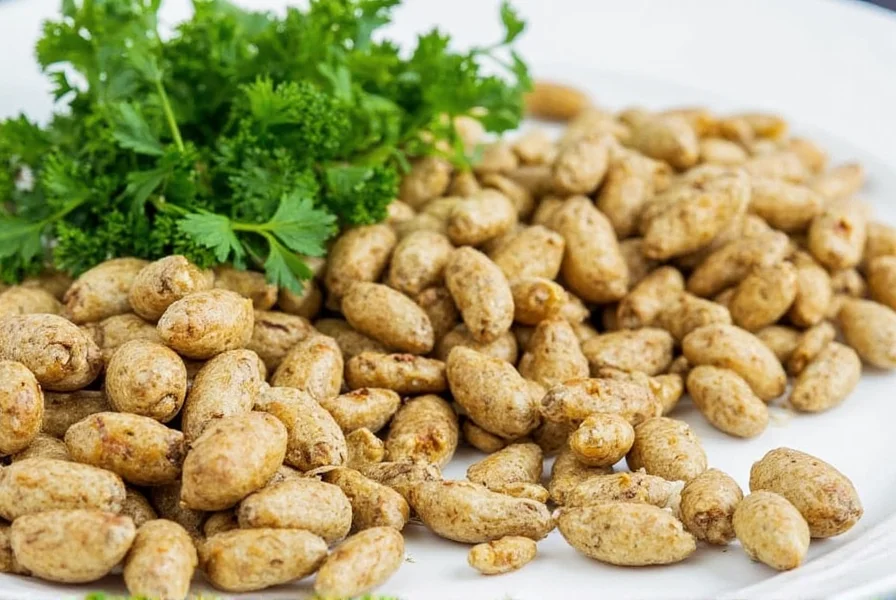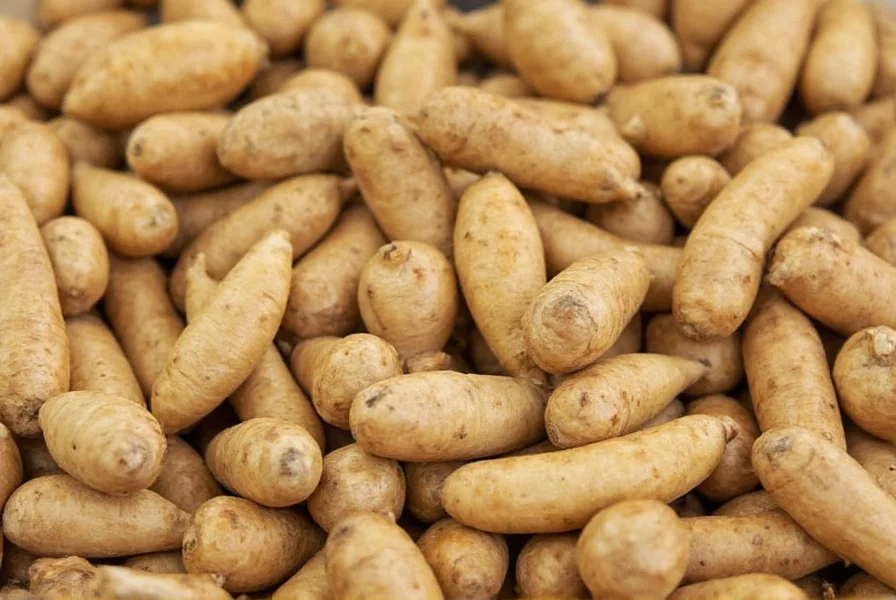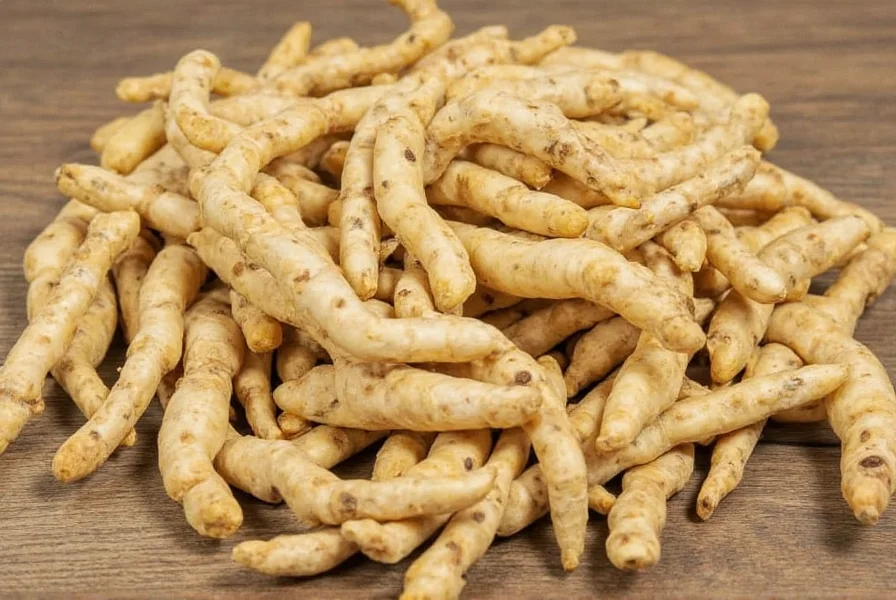Coriander root is the edible root of the Coriandrum sativum plant, the same plant that produces cilantro leaves and coriander seeds. Unlike the polarizing leaves, the root has a more intense, earthy flavor with subtle citrus notes and is prized in Southeast Asian cuisines, particularly Thai cooking. Fresh coriander root appears as thin, pale, fibrous roots attached to the base of the cilantro plant and must be thoroughly cleaned before use.
When exploring what is coriander root, many home cooks discover it's a culinary secret weapon often overlooked in Western kitchens. While most people are familiar with cilantro leaves (called coriander leaves in some regions) and dried coriander seeds, the root represents the third edible component of this versatile herb plant. Understanding the distinction between coriander root vs cilantro is essential for proper usage in recipes.
Understanding Coriander Root: More Than Just an Herb Byproduct
Coriander root (sometimes called cilantro root) comes from the same annual herb Coriandrum sativum that gives us both cilantro leaves and coriander seeds. The confusion in terminology stems from regional naming differences: in the United States, the leaves are called "cilantro" while the seeds are "coriander," whereas in the UK and many Commonwealth countries, the leaves are referred to as "coriander." The root maintains the plant's distinctive flavor profile but with greater intensity and earthiness compared to the leaves.

Culinary Applications of Coriander Root
In Thai cuisine, coriander root is considered essential for authentic flavor in many classic dishes. Chefs prize it for its complex flavor that enhances but doesn't overpower other ingredients. Unlike the leaves which are typically added at the end of cooking, coriander root can withstand prolonged cooking times, making it ideal for:
- Curry pastes (particularly green and red curries)
- Broths and stocks
- Marinades for meats
- Stir-fry flavor bases
Professional chefs often include the entire lower stem portion when using fresh coriander root in cooking, as this section contains concentrated flavor compounds. When preparing coriander root, thorough cleaning is crucial as the fibrous structure traps soil. Many cooks recommend soaking the roots in cold water with a bit of vinegar to remove stubborn dirt before scrubbing gently with a vegetable brush.
Nutritional Profile and Potential Health Benefits
While research specifically on coriander root is limited compared to studies on the seeds and leaves, preliminary evidence suggests it contains similar beneficial compounds. Coriander root contains:
| Nutrient | Content in Coriander Root | Compared to Leaves |
|---|---|---|
| Vitamin K | High concentration | Higher than leaves |
| Antioxidants | Significant levels | Comparable to leaves |
| Minerals (potassium, calcium) | Moderate amounts | Higher than leaves |
| Essential oils | Higher concentration | More than leaves |
Traditional medicine systems have used coriander root for digestive support and as an anti-inflammatory agent, though modern scientific validation for these specific uses remains limited. The coriander root nutritional value makes it a worthwhile addition to a varied diet, though it's typically used in small quantities due to its strong flavor.
Where to Find and How to Store Coriander Root
Finding fresh coriander root can be challenging depending on your location. Your best options for where to buy coriander root include:
- Asian grocery stores (particularly Thai, Vietnamese, and Indian markets)
- Farmers' markets with diverse herb vendors
- Some specialty grocery stores during peak cilantro season
- Growing your own cilantro plants and harvesting the roots
When fresh coriander root isn't available, understanding appropriate substitutes becomes essential. A proper coriander root substitute should mimic both the earthy and citrus notes. The most effective alternatives include:
- Combination of cilantro stems (the lower, thicker portion) with a small amount of lemon zest
- Parsley root with added citrus
- Coriander seed paste (use sparingly as it lacks the fresh notes)
For proper storage, wrap cleaned coriander root in a slightly damp paper towel and place in an airtight container in the refrigerator's crisper drawer. This method typically preserves freshness for 5-7 days. For longer storage, chop the cleaned root and freeze in ice cube trays with water or oil for future use in cooked dishes.
Mastering Coriander Root in Your Cooking
When learning how to use coriander root in cooking, consider these professional techniques:
- Preparation: Always clean thoroughly—soak in cold water, then gently scrub with a soft brush
- Chopping: Mince finely for even distribution of flavor, or pound in a mortar for curry pastes
- Timing: Add early in the cooking process for soups and curries to allow flavors to infuse
- Quantity: Start with 1-2 roots per serving and adjust to taste—its flavor intensifies during cooking

One professional tip for maximizing flavor: when making curry pastes, include both the root and the lower white portion of the stems. This combination provides the most complete flavor profile of the plant. For Western applications, try adding finely minced coriander root to potato salad, roasted vegetable dishes, or even compound butters for an unexpected flavor dimension.
Common Questions About Coriander Root
Is coriander root the same as cilantro root?
Yes, coriander root and cilantro root refer to the exact same part of the Coriandrum sativum plant. The naming difference stems from regional terminology—"cilantro" is commonly used in the United States for the leaves and roots, while "coriander" is used in the UK and many Commonwealth countries for the same parts.
Can I eat coriander root raw?
While technically edible raw, coriander root has a very strong, earthy flavor that's typically too intense when consumed raw. It's almost always cooked to mellow its flavor and allow it to blend with other ingredients. In traditional preparations, it's usually pounded into curry pastes or simmered in broths rather than eaten raw.
Why is coriander root important in Thai cooking?
Coriander root provides a foundational earthy note that balances the bright, spicy, and sweet elements of Thai cuisine. Professional Thai chefs consider it essential for authentic flavor in many curry pastes and soups because it adds depth that cilantro leaves alone cannot provide. Its ability to withstand long cooking times while infusing flavor makes it indispensable in traditional preparations.
How much coriander root should I use in recipes?
A general guideline is 1-2 roots per serving for most dishes. When making curry pastes, recipes typically call for 3-5 roots for a standard batch serving 4-6 people. Remember that the flavor intensifies during cooking, so it's better to start with less and adjust to taste. The lower stem portion can be used along with the root for maximum flavor extraction.











 浙公网安备
33010002000092号
浙公网安备
33010002000092号 浙B2-20120091-4
浙B2-20120091-4